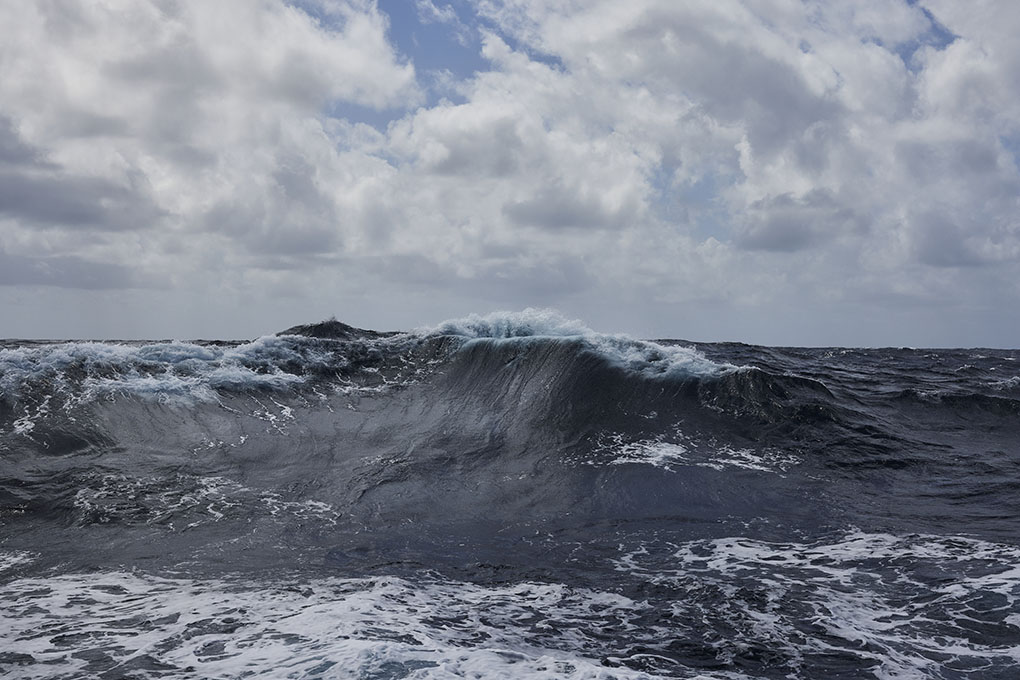Posted in:
Scientist Paper Highlights Need for More International Policy Focus on the Air-Ocean Nexus

Even casual observers of environmental science understand the fundamental interconnection between atmospheric conditions and the well-being of marine ecosystems. What happens in the atmosphere inevitably finds its way into the ocean and, vice versa, the outcomes of deep ocean processes eventually bubble up to the surface and into the air above. Yet, the authors of a recently published paper point out, one would be hard-pressed to find these connections between the air and ocean represented adequately – if at all – in international environmental policies and regulations.
“Science, international law, and policy across the air-sea interface” was co-authored by ASU BIOS Associate Scientist and Director of University Programs Andrew Peters and Christa Marandino, of GEOMAR Helmholtz Centre for Ocean Research Kiel in Germany, and an adjunct faculty member. The paper’s other contributors include lead author Erik van Doorn of the University of Wollongong and Melita Keywood of Commonwealth Scientific and Industrial Research Organisation Environment in Australia. It appeared in February as part of a special collection of invited papers published by the Surface Ocean-Lower Atmosphere Study (SOLAS) titled, “Boundary Shift: the Air-Sea Interface in a Changing Climate”. The collection is designed to assess the state of air-sea exchange science, highlight critical future research directions, and identify emerging opportunities for new collaborations, technologies, and discoveries.
Peters said a 2016 SOLAS workshop that gathered researchers in the field of ocean-atmosphere interactions and social scientists “to investigate how to more tightly couple science with society” was the impetus for his involvement in the project.
“It is wonderful to see the second paper coming out of the SOLAS Science and Society initiative.” Said Marandino. “It has been a bit of a challenge to incorporate this aspect into a largely physical science organization, but there are clear connections and lessons learned through the uniting the atmospheric and oceanic biogeoscience factions through SOLAS that make SOLAS Science and Society activities and topics extremely relevant to our community.”
“SOLAS research has shown that the atmosphere and ocean domains are often considered separately but are in fact intimately connected through processes occurring at the air-sea interface,” the paper’s introduction notes. “The natural coupling in the earth system may not be mirrored in the policies governing these systems since policymaking and the underlying law is traditionally conservative. As such, the domains are separately defined and regulated, which may not be a sufficient and effective strategy. Regulatory frameworks for the governance of the ocean on the one hand and the atmosphere on the other reflect this arbitrary duality.”
The piece goes on to explain relevant treaties and frameworks, reference instances in which the air-sea interface could have been incorporated into international legislation and explore reasons for “a gap between science and policy.”
“We hope this paper will generate consideration and discussion among policymakers and also encourage scientists to keep on being engaged in the science-policy interface,” Peters said, adding that national governments around the world, the United Nations and non-governmental organizations are among crucial audiences for the paper’s messages.
The paper’s recommended next steps include future research related to regional and national legislation, implementation of international agreements and policies, and comparisons with the land-atmosphere and ocean-land interfaces – such as a current interdisciplinary focus on marine plastics within SOLAS. Another recommendation is consideration of consequences for the air-sea interface of activities such as atmospheric carbon removal and the climate effects of deep-ocean mining.
“For me,” Peters said, “the key conclusion is that increased consideration of the air-sea interface would allow for a more holistic assessment of environmental policies, encompassing all of the current existential risks that the world is facing, including climate change, pollution, resource extraction and use.”
Tagged:


